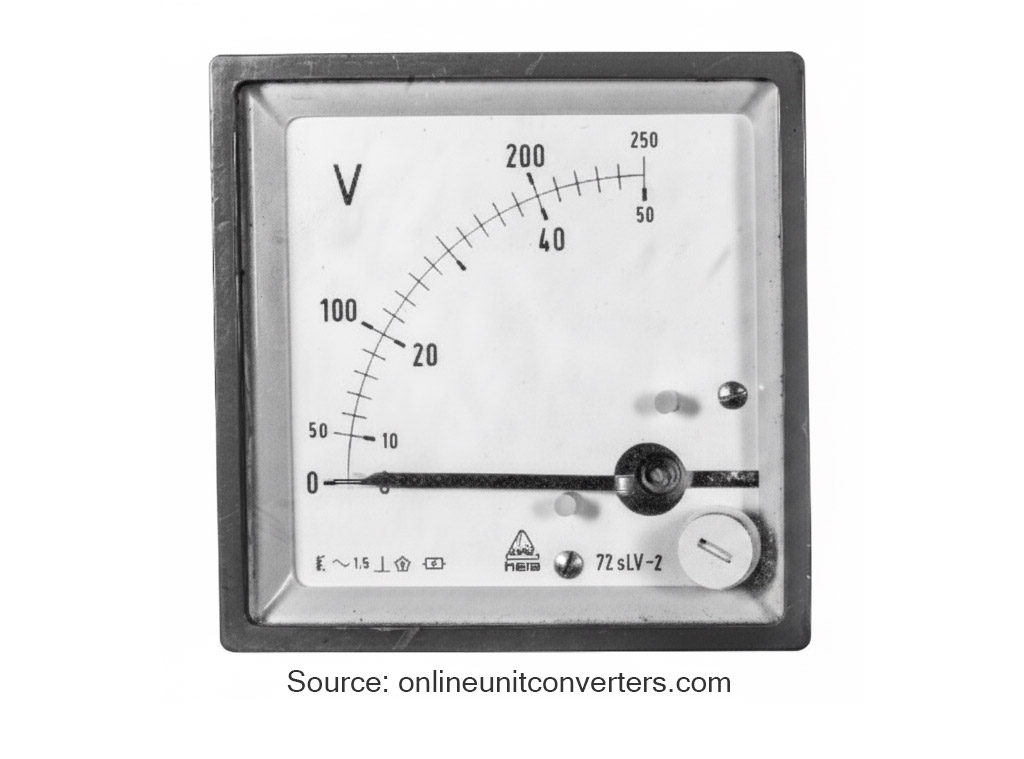Voltage converter for accurate voltage unit conversions
This voltage converter tool helps you perform accurate voltage conversions between 29 units:
Common voltage units explained
Learn more about these commonly used voltage units:
All possible voltage conversions
Below, we provide an overview of all the voltage conversions available on this website to help you navigate and utilize our resources efficiently.
What is Voltage?
Voltage is the electrical potential difference between two points in a circuit. It is the force that pushes electric charges through a conductor, allowing electrical current to flow.
Standard unit of Voltage
The standard unit of voltage in the International System of Units (SI) is the volt, symbolized as V.
Common synonyms for voltage
The most precise technical synonyms are electromotive force (EMF) and electrical potential difference, while terms like electric tension and electric pressure are less commonly used but still refer to the same concept in some contexts.
How is voltage measured?
Voltage is measured using a device called a voltmeter. The voltmeter is connected across two points in an electrical circuit to measure the potential difference between them.
Below, an eye-level photo of an analog voltmeter. A bold "V", in the top left corner, indicates that the instrument measures the electric voltage in volts.

Faqs
What causes voltage?
Voltage is created by a difference in electric potential energy between two points. This difference can be generated by chemical reactions in a battery, electromagnetic induction in a generator, or even by friction in certain materials.
Is voltage the same as current?
No, voltage and current are not the same. Voltage is the potential difference that causes charges to move, while current is the flow of electric charge. Voltage can exist without current, but current cannot flow without voltage.
Can voltage be negative?
Yes, voltage can be negative depending on the direction of the potential difference. Negative voltage indicates that the electrical potential at one point is lower than at the reference point.
Why is voltage important?
Voltage is essential in determining how much electrical energy is available to a device or circuit. It helps in designing electrical systems and ensuring safety and functionality across all electronic and electrical applications.






